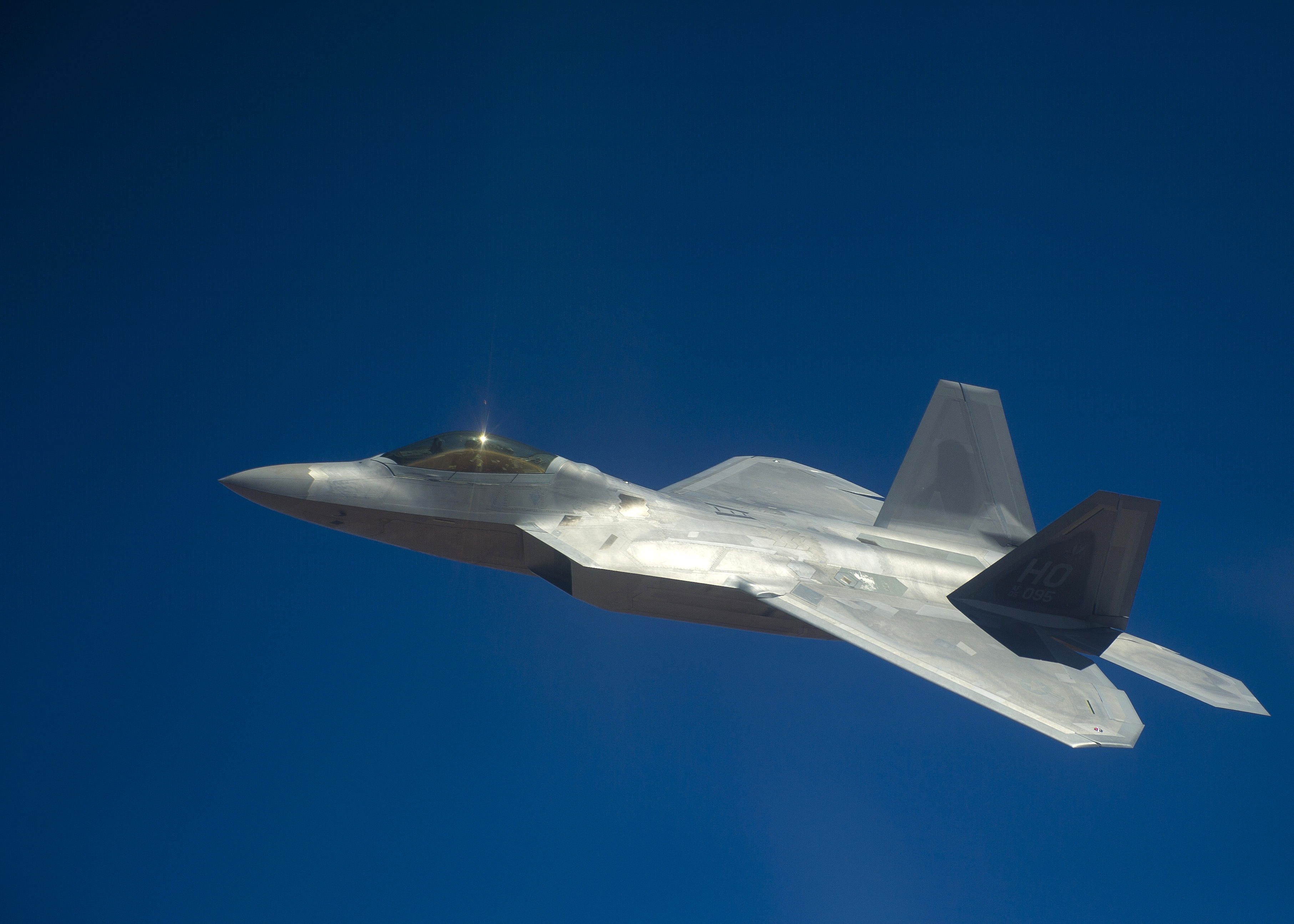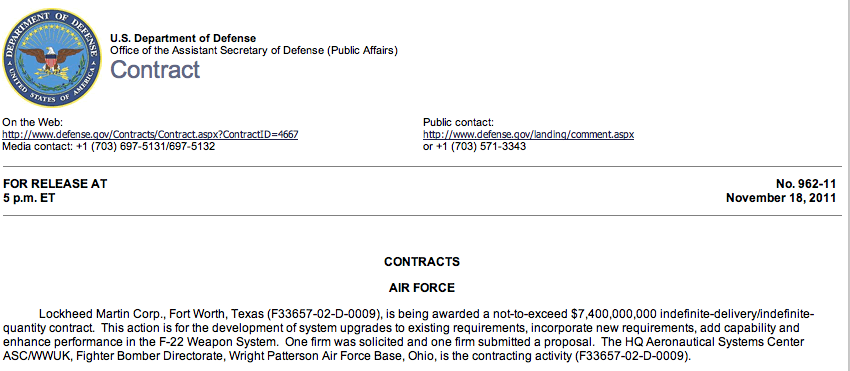
An F-22 flying what the Air Force says was "an air-to-air combat mission" over New Mexico in September / Air Force photo by John D. Strong II
They say big agencies in Washington, ranging from the White House to the Pentagon, like to dump things they’d rather not have see the light of day late on a Friday. That way, they only appear as a blip in the thin Saturday morning papers, and by Sunday, we’re on to new news. That strikes me as way too cynical…until something like this (click on it to enlarge) happens:
Excuse me:
This action is for the development of system upgrades to existing requirements, incorporate new requirements, add capability and enhance performance in the F-22 Weapon System.
Let’s check out this statement. First of all, when did the F-22 cease to be an “aircraft” and become a “Weapon System,” capital W, capital S? Perhaps the new nomenclature reflects the F-22’s status as the world’s hottest, most costly fighter.
Secondly, even though this aircraft has been flying – in defense of the nation – since late 2005, it has yet to fly a single combat mission. Afghanistan? Zilch. Iraq? Nada. Libya? No way.
So given that it has never been tested in battle, why is there a need for “system upgrades to existing requirements, incorporate new requirements, add capability and enhance performance”?
Not only has it been grounded for much of the past year – it occasionally fails to give its pilots the oxygen they need to stay alive – but its failure to fly any combat mission over the past six years makes one wonder: why do its capabilities need to be improved and its performance enhanced?
This brings to mind a breakfast I had, along with other reporters, three years ago this very week. It was with John Young, at the time the Pentagon’s top weapons-buyer. Let’s tap into Peabody’s Wayback Machine and listen in:
The recent mission capable data for FY2008 on F-22s had a mission capable rate somewhere in the 62 percent range. I think that’s troubling. Follow-on operation tests in 2007 raised operational suitability issues and noted that the airplane still does not meet most of its KPPs. It meets some, but not all. Key performance parameters.
The trend in those operational tests, there was an IOT&E, a follow-on test I think in 2004 and a follow-on test in 2007. The trend is actually negative. The maintenance-man-hours-per-flying-hour have increased through those tests. The last one was a substantial increase.
The airplane is proving very expensive to operate, not seeing the mission capable rates we expected. And it’s complex to maintain. In the Air Force I did talk about this a little bit yesterday in the hearing, the Air Force had planned and expected to have kind of a two-tiered structure where some of the earlier jets were not fully capable jets, not to the block 35 or increment 3.2 configuration which provides important capabilities.
I think something like 100 jets would kind of be lesser models. So one thing that’s in the budget and I talked about yesterday is to bring more of that fleet, most of that fleet, to a common, high end, capable configuration.
But the cost of that is $6.3 billion of R&D. This is in a platform we’ve already developed. We’re going to spend six billion more of R&D to engineer the 3.2 upgrade for the software and the changes in the jet, and then about $2 billion to modify on the jets. That’s $8 billion more, and $8 billion I think needs to be spent in order to make sure the 183 airplanes we have will be highly capable fighters…
Apparently, that’s the contract that was awarded Friday night.
Assuming it is, $7.4 billion spread over the 100 or so cut-rate F-22s means each needs something like $74 million in fixes. Seventy-four million dollars. Each. For repairs and upgrades to existing airplanes — not for a new plane. I’m sure the Air Force will be able to point out how my math is faulty and how the F-22 has kept the nation safe, and will continue to do so.
But that misses the point. On its face, the contract is taxpayer money, money we do not have, to “fix” a 188-plane program costing $67 billion (that’s more than $350 million per plane) that has never seen combat, and that has been grounded for much of the past year. We are either suckers, or doomed. Or both.


